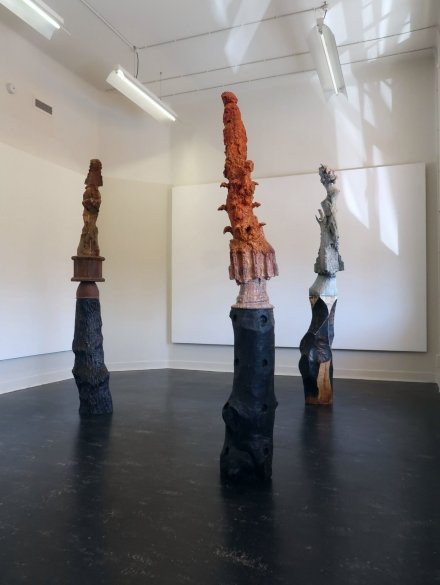SPOTTED: Fine Art & Design in Education alumnus Johan Steller tells Metropolis M about his reinterpretation of Gothic imagery
- Fine Art
- Design
Every year, magazine Metropolis M releases a Graduation Special, featuring work by several finals students who graduate as visual artists. Johan Steller (Fine Art and Design in Education Zwolle) is one of the alumni featured in the special. Metropolis M asked Johan the question, "What is the story behind your work?"

Although church attendance is falling faster than ever, Johan Steller (1999) also notes a renewed appreciation for things like craftsmanship, decorative excess and the desire for something higher – things he associates with the church. In Steller’s work, the secular and the profane come together, he mixes Christianity with countless different materials to create impressive pieces.
Distributed throughout the space are three sculptures. They tower above the visitors like sinuous pillars. For each sculpture, a tree trunk serves as the pedestal, planed by hand and blackened with wood stain and burning. From that base, the sculptures reach upwards via loosely stacked segments. Here and there, they lean to the left or right, apparently barely remaining in equilibrium.
The sculptures form a unity in terms of their form and the atmosphere they exude. They are weathered, as if they have withstood centuries of erosion. It feels appropriate to whisper in their presence. If you look more closely, you recognise cathedrals and other religious motifs. The head of a saint looks down on us from one of the sculptures. Then reverence turns to awe. With awareness and ingenuity, the sculptures are revealed as an amalgam of a profusion of materials and elements. Cardboard, plaster, polyurethane, polystyrene, paint, candle wax, even a flower pot offer endless variation in colour and texture.
That, too, is Gothic, says Steller. While the Gothic formal language played little part in the Reformed community he grew up in, Christianity was a fixture. As an artist, he feels the need to relate to Christianity but his work is not religious, nor is it a criticism of religion. He appropriates it, it feeds his work, but he adds his own twist. Although in his previous work Steller made literal references to saints and Bible stories, these elements have gradually become the foundation for a more abstract formal language that doesn't directly address a higher plane but breathes its atmosphere.
Author: Floor van Luijk